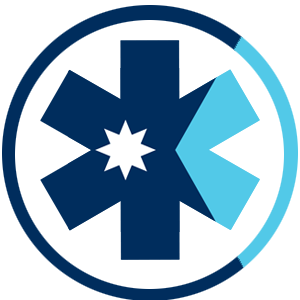An advanced life support (ALS) ambulance must be staffed by at least: one EMT or one AEMT and one Paramedic; or if a staffing hardship variance has been approved by the Office EMS, one Paramedic and one Emergency Medical Responder driver for all emergency calls and interfacility transfers; or one EMT or one AEMT and one registered nurse or physician assistant who is an EMT, and has been approved by the medical director to provide advanced level care or one registered nurse who holds a Certified Emergency Nurse, or Certified Flight Nurse credential and has been approved by the Office of EMS.
An ALS service shall provide basic life support (as described in the Basic Life Support section), advanced airway management, manual defibrillation, and administration of intravenous fluids and pharmaceuticals. In addition to providing advanced life support, an ALS service may staff additional ambulances to provide basic life support.
An ambulance service providing advanced life support shall have a written agreement with its medical director to ensure medical control for patient care 24 hours a day, seven days a week. The terms of the agreement shall include a written policy on the administration of medical control for the service. The policy must address the following issues: two-way communication for physician direction of ambulance service personnel, patient triage, treatment and transport, use of standing orders and the means by which medical control will be provided 24 hours a day. The agreement must be signed by the licensees medical director and the licensee (or the licensees designee) and maintained in the files of the licensee.
When an ambulance service provides advanced life support, the authority of a Paramedic, a Minnesota-registered nurse-EMT/CEN/CFN, or a Minnesota-registered physician assistant-EMT prevails over the authority of an EMT in determining the delivery of patient care.
 Ambulance services in Minnesota are licensed at four different levels that determine the level of care they provide. Basic Life Support (BLS) ambulances offer basic emergency care, while Part-time Advanced Life Support (PTALS) provides advanced treatment when available. Advanced Life Support (ALS) ambulances provide advanced level interventions around-the-clock, and Specialized Life Support ambulances are equipped for patients with unique or complex medical needs. No matter the situation or license level, there’s a dedicated ambulance ready to respond. Learn more about each license type by clicking below!
Ambulance services in Minnesota are licensed at four different levels that determine the level of care they provide. Basic Life Support (BLS) ambulances offer basic emergency care, while Part-time Advanced Life Support (PTALS) provides advanced treatment when available. Advanced Life Support (ALS) ambulances provide advanced level interventions around-the-clock, and Specialized Life Support ambulances are equipped for patients with unique or complex medical needs. No matter the situation or license level, there’s a dedicated ambulance ready to respond. Learn more about each license type by clicking below!
